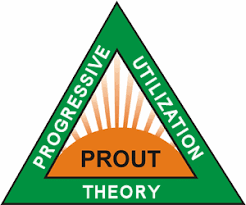– Dr. Hans-Joachim Rudolph, Microvita Research e.V.
This summer, there was a fantastic exhibition in Wiesbaden, Germany: “WALK IN AND WONDER, CONCRETE ART AT THE WALKMÜHLE”, curated by Edgar Diehl aka Caetanya (=> https://vimeo.com/733654310). I drove there to to see it just before the closing event. For me this finissage became the cultural highlight of the year!
In an earlier publication I had spoken about the fact that one can contrast a realm of possibilities described with imaginary numbers with a realm of actualities described with real numbers. Correspondingly, I had referred to a remark by Hans-Peter Dürr, according to which there is actually no matter, but in the deepest sense, the world is nothing but spirit. And in this realm of possibilities the subjunctive prevails, of course.
Accordingly, I was delighted to see in the Wiesbaden exhibition Guido Winkler’s painting “One of the infinite possibilities”. It shows two diagonally opposite poles, between which a colored, but very simply structured field stretches out. To me, this imagery refers, on the one hand, to the fundamental bipolarity of the world, and on the other, to the fact that, despite its structural simplicity, there are infinite possibilities to implement it. In another exhibition room there was another work of this artist. It shows the same motif, but in shades of grey. Its title is “Tree of Life”, emphasizing the special importance of this principle for all vital processes.
In order to realize possibilities, of course, spaces are needed. Accordingly, spaces are thematized as soon as it is a matter of giving validity to the unseen, to that which lies behind the surface of appearances. Steven Baris delivered two works entitled “Never the same space twice D3 and D28“ (Tab. 1). They each show 3 traces left behind in vertically arranged media, including their refractions and cracks, which refer to the differences of the respective media. A similar meaning can be attributed to an installation by Christiane Grimm; although here the spaces are not placed next to each other, but behind each other. By means of an intelligent choice of colored contrasts, an enormous depth effect is achieved; in addition, the view changes with every slight movement of the viewer due to the vertically ribbed glass in front of it.
In addition to the arrangement of the spaces, there is, of course, also the question of their actual nature. From physics we got again and again different answers: Isaac Newton postulated the absolute space, which can be influenced neither by an observer, nor by the objects or processes contained therein. Albert Einstein replaced this concept by a dynamic space-time, which changes, depending on the observer, but also on the distribution and movement of matter. Next, spacetime could be quantized due to the progress of quantum physics so that it can be described nowadays as a dynamic spin network, which may be represented graphically by diagrams of lines and nodes (=> https://youtu.be/SW7hmII8MKY).
Bim Köhler’s “QK-160.211” (Tab. 2) as well as Antonio Marra’s “I’m much nicer than Scott” (Tab. 3) spontaneously brings such spin networks to mind. While the arrangement of the color elements in Bim Köhler’s work corresponds to a snapshot, the rippling of Antonio Marra’s picture surface has the effect that these elements change with every movement of the viewer; thus, the artist succeeds in dynamizing his work of art.
Such an interplay between still and moving images also characterizes the reliefs “Nyquist Poetry I” (Tab. 4) and “Palindrome II“, designed by Edgar Diehl. Instead of the fine cannelure used by Grimm and Marra, he employs broader folds that allow changing patterns and even interferences to emerge as one passes by. So here, too, the dynamics are created by the movement of the beholder. Diehl says of his reliefs that they occupy a bridging position between image and sculpture, between two- and three-dimensional objects, where there is, at the dimensional transition, also a change of the prevailing laws!
Interestingly, this idea can also be found in Marcel Duchamp’s notes on the “Wilson-Lincoln System” as set down in the “Green Box” of 1934. In it, he describes how the transition from the lower dimensionality of the “nine male molds”, to that of the upper glass, i.e. the realm of the “bride”, should take place. In fact, the boundary cannot be crossed by the “drops” themselves, but only by their images, whereby their reflections are to result from the “folded plate” conceived at the transition between the two media. Accordingly, this would show a different image from below than seen from above (=> https://www.toutfait.com/issues/issue_3/News/stephen/popup_10.html).
The exhibition curated by Edgar Diehl thus offered not only rich illustrative material on the subject of spatial dimensionality, but also on the exposed role of the observer as well as on the theory of the transition from the objective to the subjective conditions, or back from the possibilities to the actualities of this world.
Last but not least, a remark on John Aslanidis’s “Sonic Network No. 15“ (Tab. 5). This large-scale work was presented to us as an example of how complexity can arise from simple basic forms. In the life sciences, however, the same idea is used to explain the emergence of life from simple basic forms and, moreover, the emergence of consciousness from elementary forms of life (see D. Dennett, https://de.m.wikipedia.org/wiki/Daniel_Dennett). I have always disagreed with this. And in accordance with the claim that a work of Concrete Art should show what the world is all about from the artist’s point of view, this work is a good example to show why:
It is of course true that here, on the canvas, complex forms arise from simple ones. But the starting situation is anything but simple: After all, at the beginning a person endowed with consciousness stands in front of an empty canvas and reflects the idea of filling it somehow. So the initial situation is not simple, but complex, in the sense that it is about an interaction between matter and mind from the very beginning.
Marcel Duchamp summed up this fact by pointing out decades ago that the art creator only provides one part of the creative process, while the other part is contributed by the act of viewing, which only together result in a complete work of art.
“Ce sont les regardeurs qui font les tableaux“ (1957)

Steven Baris: Never the same space twice D28 (2022)
Courtesy Künstlerverein Walkmühle e.V.

Bim Köhler: QK-160.211 (2021)
Courtesy Künstlerverein Walkmühle e.V.

Antonio Marra: Ich bin viel netter als Scott (2022)
Courtesy Künstlerverein Walkmühle e.V.

Edgar Diehl: Nyquist Poetry I (2019)
Courtesy Künstlerverein Walkmühle e.V.

John Aslanidis: Sonic Network No. 15 (2014)
Courtesy Künstlerverein Walkmühle e.V.





